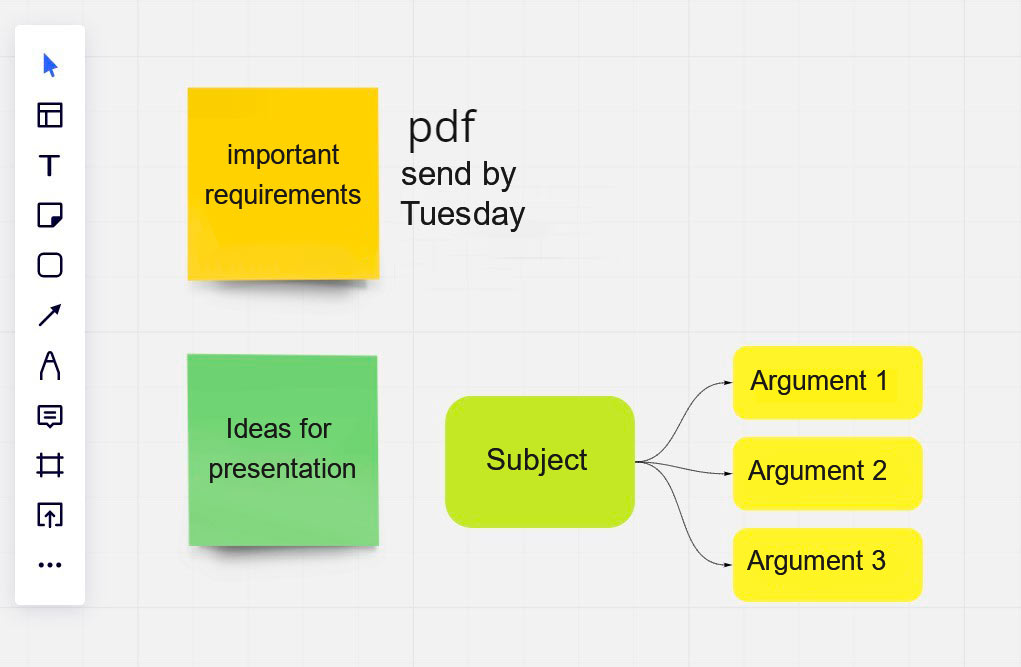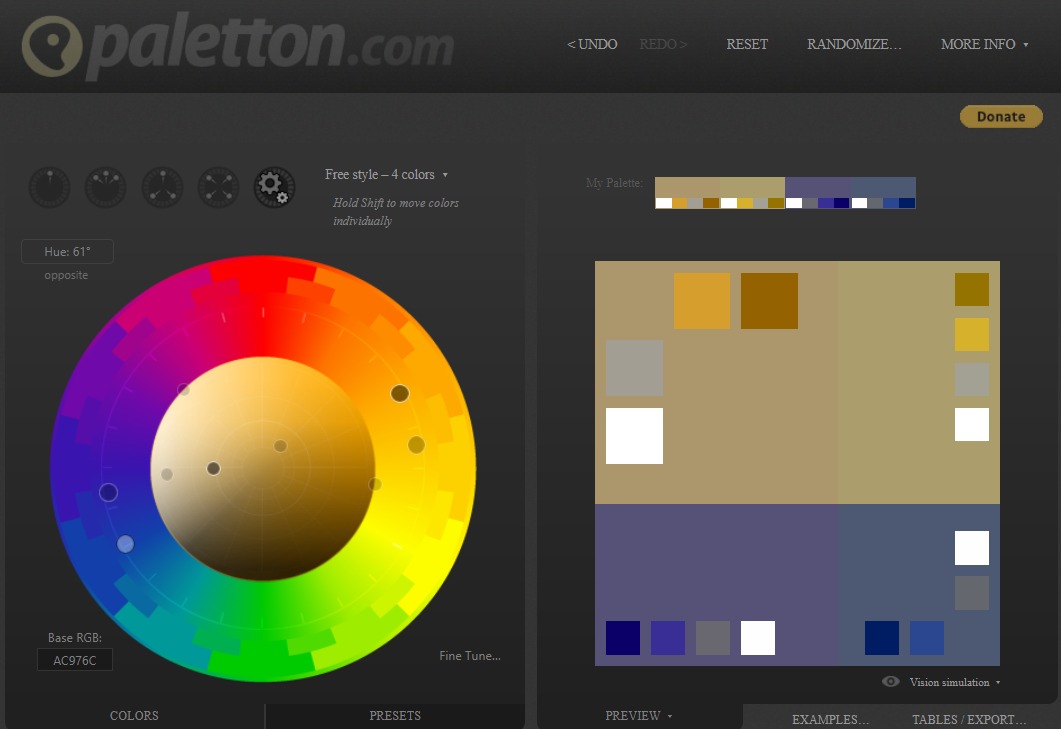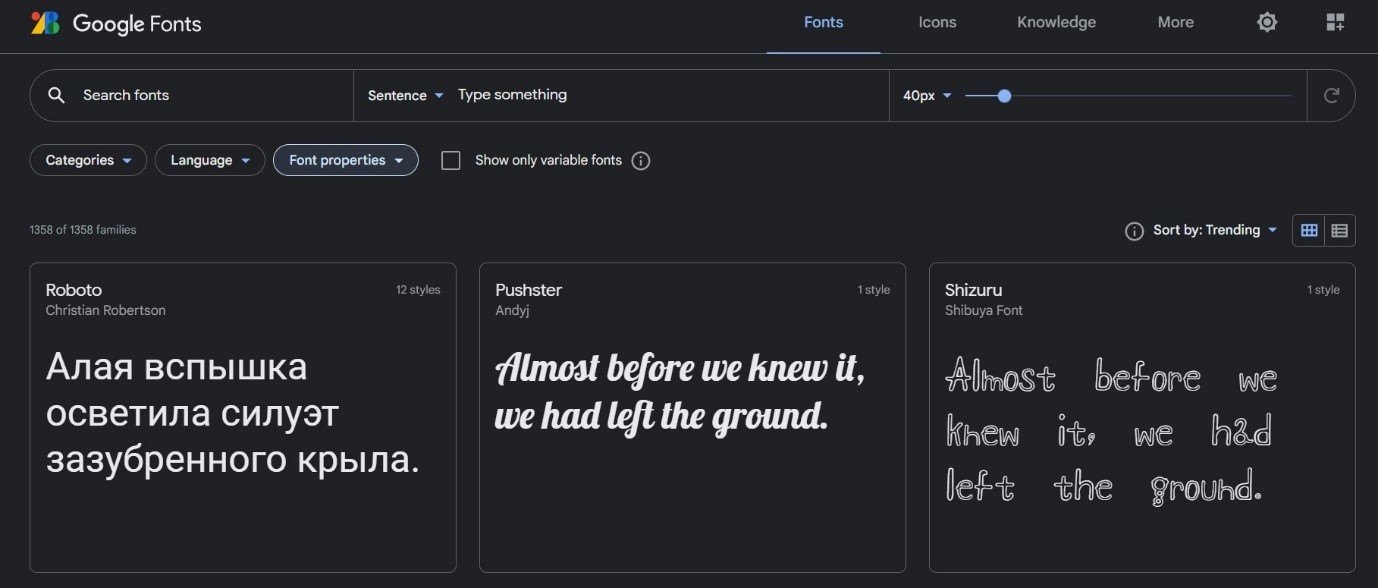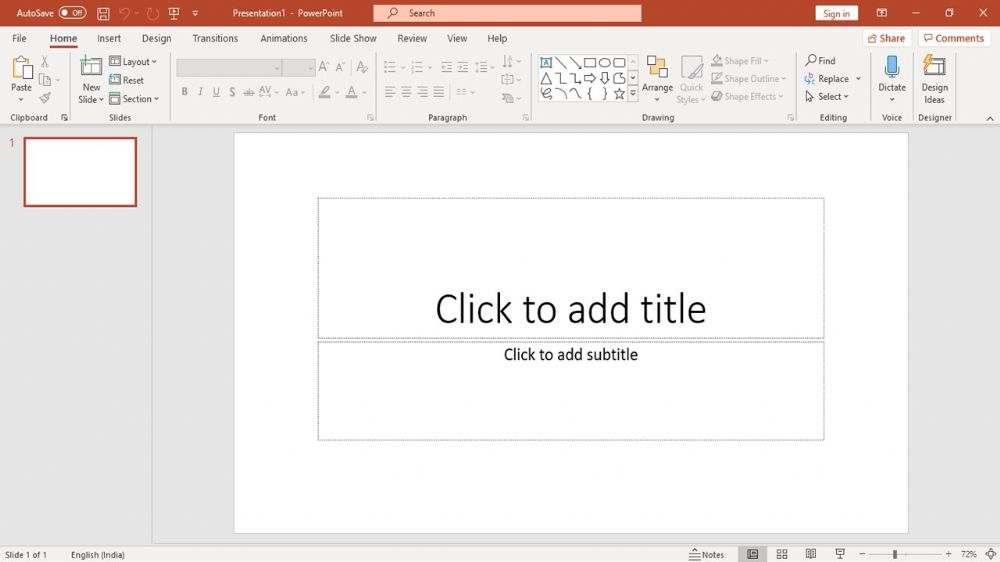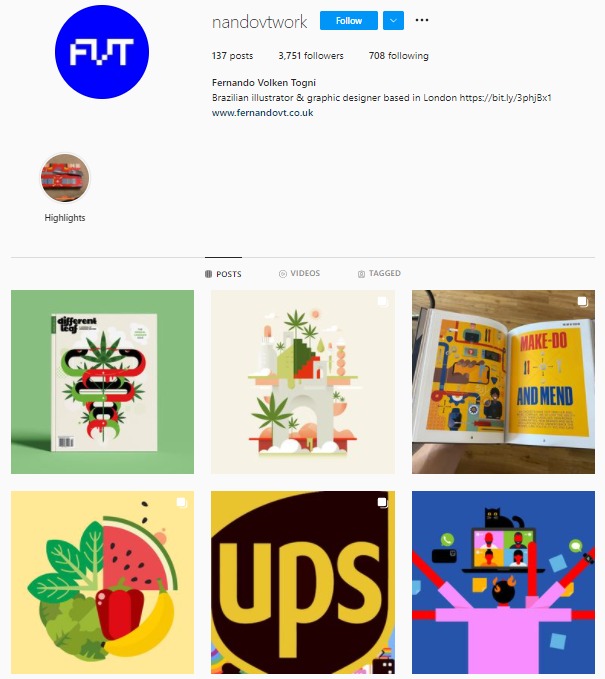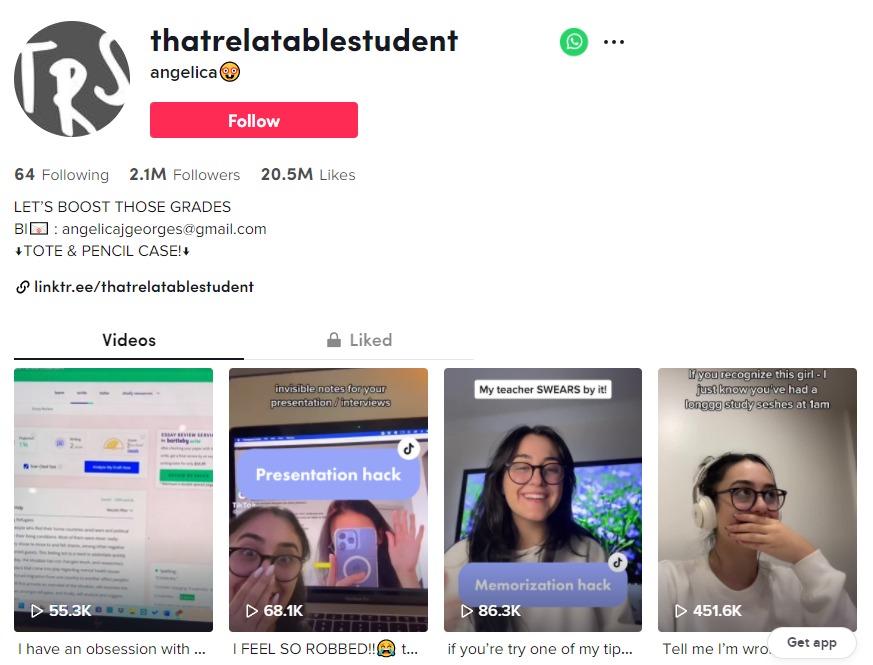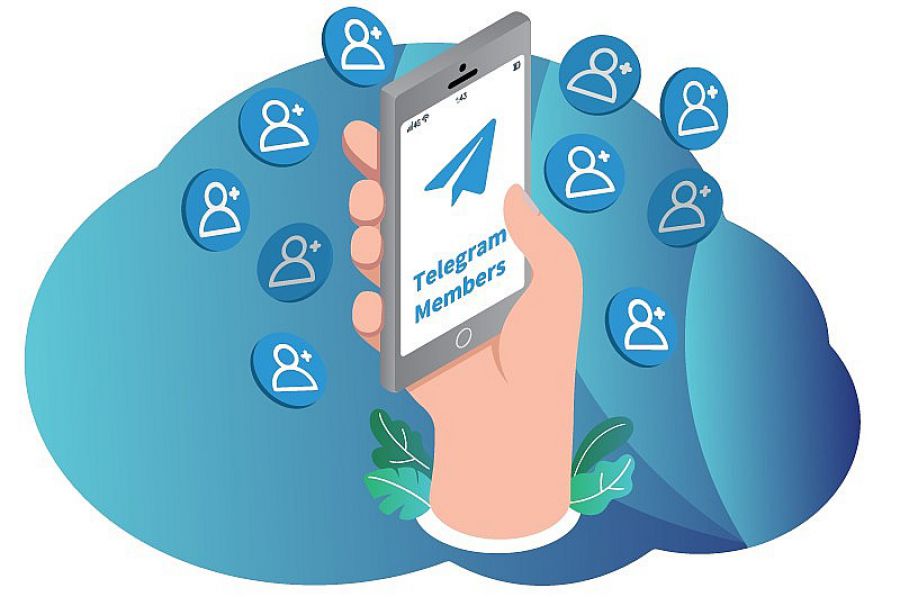How to Make a Presentation on a Computer: Effective Guide

In our work or study, we often need a presentation to make a report, prepare a speech, present a task as completed, even to present ourselves favorably for a CV or portfolio. If you struggle with creating presentations or want to clarify or delve into some aspect of the presentation making process, then our instruction article on how to make a presentation on a computer will help to answer the main questions: What to start with? What a presentation must include? What software may be used? Where to find inspiration, cool examples and lifehacks?
Getting prepared: What to consider?
We have collected the best tips in our detailed guide on how to make a presentations more professionally so that they achieve their goals. But what do you need to consider at the very beginning?
Before opening your presentation program and adding a new slide, it’s important to answer questions that will define the composition, structure and style of your future presentation. Let’s discuss them one by one.
- What is your presentation for?
Here, elaborate for yourself on why you are creating the presentation, what its purpose is, what you want to change by these words or slides. Perhaps, this is the main question to ask in order to define your subsequent work. - Who is this presentation for?
A lot of depends on who will see your presentation, the presentation’s structural logic, the arguments to be used and the graphic style. Before preparing the presentation, define who you viewers will be and what they expect to see on your slides. - How are you going to present?
You also need to realize what is going to happen with the presentation after you finish the last slide: Will you distribute it by email and wait for a reply or will you present in person? That influences the amount of text on slides, the design and your preparation. - Are there host or client requirements for the presentation?
An important point that is often forgotten. Before making a presentation, inquire what the required format is, if there are restrictions for slides or a fixed structure, how long the presentation shall take, and other organizational issues. If you check for it in advance, you will have time to comply and will be confident about your material.
Presentation ideas and important notes can be conveniently gathered in Miro or other similar services
Basic components of a presentation
Having answered the questions above, you can proceed to the presentation preparation itself. And if you have already clicked ‘New Slide’, please wait. Don’t hurry. We have cool lifehacks for you to facilitate you further work. Let’s start with discussing the basic components of any presentation.
Structure of a presentation
Nice presentations are not created spontaneously. Talks by TED speakers are a huge work that is prepared and perfected long before they come on stage. The resulting simplicity, irony and fascination of presentations by professionals of such level are achieved owing to the perfected structure – the control of the listeners’ attention is exercised naturally and consistently. So, what do you need to elaborate to be listened to with the same fascination?
1. Basic problem
What do you talk about in your presentation, i.e., what pain, problem, statement? It is important to describe in a literally single sentence the specific problem you’re going to talk about and call to solve, so that a person who has attended or read your presentation would get solid understanding.
2. Plan of the presentation
Now, compile a plan for your presentation – anything that can be used as a framework for your argumentation and scenario, you may even us the approach taught to us back in school at literature classes: exposition, developments, climax, resolution. First, define the major sections, then elaborate on your statements within each section. The beginning of your presentation is the entry point for your story and problem, here you can have an introduction and describe the subject briefly. The last slide is good for the speaker’s contact details, main idea, acknowledgements or emotional conclusion.
3. Arguments
To have the audience dive into the problem and come to the decision, idea or conclusion that you need, you have to carefully choose your arguments for every item on your plan. Appropriate arguments would be facts from studies, various projects, quotes, opinions by experts, case studies (as experienced by you or other people involved). Visualized data would work well here, since it’s always easier to comprehend — as well as speaker’s experience or stories that are relatable to anyone. This helps put the audience in the particular context.
Lifehack 1: Barbara Minto Pyramid
The Minto pyramid principle is an argumentation system invented by Barbara Minto from McKinsey. This system is based on a strict principle: We structure our points in the form of a pyramid and move from the basic idea, issue or problem to arguments, stating conclusions in the end of each group of arguments. This versatile approach helps structure either compelling short meetings or full-featured addresses.
Lifehack 2: Put your plan on paper
Researches and empirical observations show that information on physical media is easier comprehended and structured by our brain. This also matters when you think of how to make a presentation more engaging. In the process of coming up with the plan and arguments, it’s usually easier and more efficient to deal with paper: you strike through, draw, arrange sheets in a different order and experiment — electronic environment will not pressure you to promptly compose a slide layout and perfect design, so the process will move faster.
Narrative
The preparation of the text for a presentation on business or studying issues depends on your chosen purpose, as discussed above, and whether you are going to present in person or the presentation is for reading only.
- If your presentation is for reading only:It is important here to have your ideas understood as accurately and correctly as possible. Therefore, work on your arguments and information visualization – diagrams, hyperlinks to supplemental materials, clearly structured text, fully covering the presentation’s subject and problem — this is what a good presentation for reading must have. Depending on the situation, such presentation may be built from a report, your portfolio, or a completed task.
2. If you are to present in person: You have 2 tools at your disposal: the text on your slides, and your speech. The basic rule is that they shall differ and not duplicate each other. Otherwise, the audience will not appreciate your work at all and will lose their focus at the 3rd slide already. The text in the presentation should better be shortened and in separate statements, emphasizing only main points, while the conclusions and some details should be spoken out. It is most convenient to prepare it when you already have at least draft presentation – try to tell it in usual and simple words on a voice recorder. A couple of such rehearsals will help to get rid of excessive words, phrases and terms that would be challenging for you to articulate during your speech.
Visual design
The finishing touch for every presentation is its visual design. It is the design of slides that helps us hold and control the viewers’ attention, and it’s also what may put off a person and provoke mistrust. How to make a presentation look nice and sound? The points below will help with that:
Colors
Choose several, like 2 or 3, harmonious colors. Typically, these are the background color, the body text color and the color for accents in headers and graphics. You can pick cool combinations with the help of some tool like Paletton.com, ColorPalettes. Example selection of a three-color scheme for a presentation
Fonts
You shouldn’t overdo the fonts, too — better limit them to 1 or 2, one for body and one for headers or accents. Pick fonts that are easy to read, like Century Gothic, Muller, Roboto, Monserrat, Oswald. Even a single font might be enough, if it has various variations: Bold, Italic, Regular, and their combinations. It can help emphasize your main points and form easy-to-read text blocks.
Google’s font selection service
Images
Cool pictures in your created presentation help convey the main idea without words, create a bright visual image that will highlight your arguments. To find quality images, use stocks (e.g., pexels.com, unsplash.com) or specialized services, like Popsters: if you authorize in Flickr on it, you can search for the most popular images by key queries that suit you (make sure to check the license to use).
Graphics
Data visualization is the power of a presentation. Anything that can be presented visually is better to form into visual elements rather than text. To find cool templates and blanks for diagrams and plots, also use specialized services and stocks, such as Freepik, flaticon.com.
How to make your presentation look pretty
The design and formatting of presentations, as we have already found out, are a complex subject where a lot can be perceived subjectively. To avoid such an approach, assume that design has to solve a certain problem, for example, to effectively and simply get your ideas across to the listeners. The following principles may also help you throughout all the steps of presentation creation:
- Express yourself briefly and point by point
The clearer is your thought from a slide, the better. Try to remove excessive phrases and words at all, read it out loud to check that no meaning is lost. And, of course, add new slides, use bigger font sizes and, if necessary and the number of slides is not limited by the requirements, you shouldn’t try to fit everything in one slide. - Don’t be afraid to use a template
If you have little time to prepare or you are not confident in your skills, take a presentation template and focus on working out the structure and text. Thus, you will get much more detailed and quality result. However, there’s always a chance that your template was already used by someone, so, if possible, you should customize it or work on the design by yourself. - Less is better
This principle is applicable to texts, images, fonts and colors in presentations. A frequent mistake made by beginners when creating slides is to use all at once. Remember that your best beginner’s kit to help create a really stylish presentation is point-by-point narration, few same-style quality illustrations, 2 fonts and 2 to 3 colors at most.
Presentation services and software
Presentation preparation and formatting is quite a common task, which is often has to be done in a wide variety of areas. A lot of services have been developed to facilitate this task, so we are going to discuss the major ones below. They offer a convenient and simple way of creating a presentation on your computer.
PowerPoint
This is, perhaps, the best-known presentation software, from the Microsoft Office suit. Therefore, it is quite natural to have a desire to know the features of how to make a presentation in PowerPoint. PowerPoint’s advantages include wide functionality, clear and user-friendly interface; newer versions, starting 2019, also use automatic tips and settings that make your work easier, for example, accelerate alignment to grid. It is distributed on a paid basis, however there’s a 1-month trial version available.
PowerPoint’s initial interface
Lifehack: Check with the organization where you work or study, if they have Microsoft Office subscription available for their employees/students — quite possibly, they have.
Google Slides
Google’s cloud presentations for teamwork — a convenient platform for those who work on a project in team or remotely. Google Slides has a simple interface, which is clear and easy to learn from scratch, however the set of fonts, transitions and visual elements is limited.
Keynote
A standard presentation application by Apple. It offers simple and clear basic functionality similar to Google Slides. One disadvantage is platform restriction, so you’ll have to convert you presentation to PDF or PPTX to be able to open it in another program.
Canva
An online platform for slide preparation with a large set of various templates that are suitable for both work and study. There are paid functions but the free functionality and set of templates are sufficient to make a nice presentation.
Prezi
A website for creating animated presentations with many transitions and animation effects. It offers clear functionality and possibility to work online. Drawbacks include controversial perception that may be caused by continuous animation, the necessity to present information very briefly, limited visualization capabilities.
Where to find useful materials and inspiration?
To make your presentation interesting and engaging, your visual experience also matters, as well as the ability to quickly find a certain useful tool, get a tip or advice. We have collected for you several recommendations on where to get those.
TikTok and Instagram
Social media have long become not just a place for likes and pictures but a real tool for education. The format of quick educational videos and posts more and more rapidly takes over these platforms, so TikTok and Instagram now already have many cool accounts with useful tricks, analyses, secrets and tools that are helpful in creating presentations. On TikTok, for example, this is @Thatrelatablestudent talking on how to quickly create stylish slides, useful services and lifehacks for presentation structuring, colors and fonts; and on Instagram — @deardatapostbox with her selections of tools, simple and bright ways to visualize table and data.
and
Accounts on presentation creation: @Thatrelatablestudent and @Nandovtwork
Slideshare
The best-known presentation hosting website — you can find here presentations on very different subjects, from TED talks to educational materials and portfolios. It is useful to follow companies who are particularly specialized in presentations, to draw ideas, experience and inspiration.
Behance
A website for designers that exhibits a lot of graphic works and illustrations from all over the world. It helps to develop your visual experience, find trends and ideas for presentations and interior designs.
Pinterest
Perhaps, the best-known platform for inspiration. If you use a search query associated with presentations and design, you can get nice selections on various subjects, find illustrations, get inspiration from examples of working with fonts and prepare a mood board for your presentation.
Slide Bank by Bonnie & Slide
The bank of free slides from the Bonnie&Slide Presentations Academy will help to find specific sample slides for numerous topics, check what similar tasks others solved in presentations, and get inspired to create effective and bright works.
Creating a nice presentation for your study, work or public talk seems an uneasy task at first glance. However, constant training, use of advices and lifehacks will provide you with the needed experience. So, now that you have all the knowledge on how to make a presentation interesting and engaging, it's time to start with the very first step. Try, experiment, present – and we’re sure you’ll be able to make cool and effective presentations on any subject.
Try Popsters Trial plan to get content activity statistics of any pages for a next 7 days for free
Try for free
